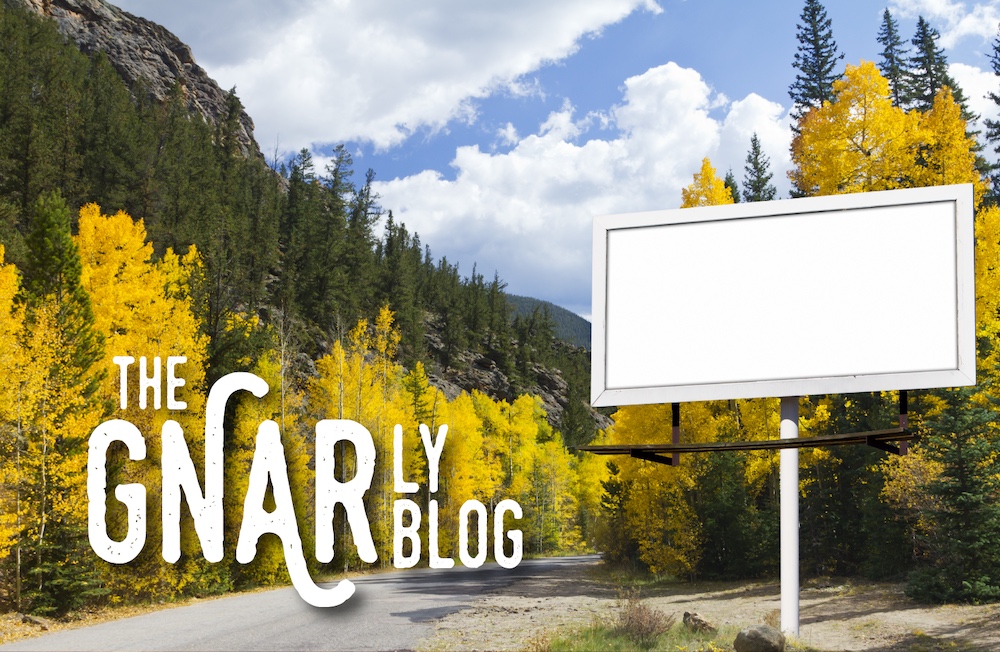
By: Kate Kopischke, Executive Director, Scenic Utah
Besides taking steps to limit sprawl and congestion, ensure affordable housing, and provide a range of pedestrian and transit options, successful gateway communities find ways to control the visual clutter that follows population growth and booming tourism.
Among the visual pollutants that detract from a community’s appeal and aesthetic qualities – strip commercial development, cell towers, high-voltage transmission lines, etc. – outdoor advertising may be the most obvious. Billboards are often the first sights greeting incoming visitors. And more and more of these billboards are converting to digital, flashing a series of ads every eight seconds and increasing light pollution.
The fast growth of electronic billboards and business signs has been catching communities and elected officials off guard. Most smaller communities, and even many cities, lack provisions or language in their sign codes that limit or prohibit billboard owners from converting static billboards to digital, or from installing new digital billboards in new locations. In the absence of such language, communities are often forced to allow permanent conversions, including in gateway communities and other areas where digital billboards are unwanted or inappropriate.
To help communities address this issue, Scenic Utah produced a “Primer” for local governments and community groups seeking to develop or strengthen their digital sign and billboard ordinances. Written by professionals with many years of experience navigating the complexities of billboard and sign ordinances, it offers definitions, guidance and key considerations, a checklist for creating robust and defensible ordinances, and links to additional useful resources.
The idea for the Primer stemmed from an industry-backed bill introduced in the 2021 Utah Legislature that would have given billboard owners the unilateral right to digitize their signs, rather than going through a local government planning process. It would have required communities that currently allow digital “on-premises” (business) signs to allow “off-premises” billboards to digitize, regardless of existing ordinances or community standards.
The bill failed, thanks to fierce opposition from towns and cities, dark-sky advocates, associations of government, and residents across Utah. To help represent those voices, Scenic Utah worked throughout the session researching and disseminating information to state lawmakers about the negative opinions and impacts of digitizing billboards throughout Utah. In response – and in anticipation of similar legislation being introduced in future legislative sessions – many local government officials sought guidance from Scenic Utah on steps they can take now to strengthen their ordinances.
The Primer, which was distributed in May to elected officials in towns and cities throughout Utah, offers guidance in the context of Utah state statutes – which are some of the most billboard-friendly in the country. But the information and resources also are applicable to any community outside of Utah that is seeking to better control outdoor advertising and the impacts of digital signage.
The national organization Scenic America offers additional, helpful guidance to gateway and other communities on billboard and sign control, including research findings on the economic and environmental impacts of outdoor advertising. They also have developed ‘Tools for Action’ that offer a range of ideas, talking points, and compelling rationale for communities pursuing billboard reform.
As Scenic America notes – and as many gateway communities have experienced first-hand – outdoor advertisers often claim that controlling billboards will turn even the most vibrant community into an economic ghost town. In fact, the visual improvements that come from controlling billboards and limiting light pollution actually help local economies. “The way a community looks affects how both residents and visitors feel about it,” explains Scenic America. “An attractive community has a better chance at industry, including tourism.”

Kate Kopischke is Executive Director of Scenic Utah, a non-profit working to protect and enhance the scenic qualities of Utah’s communities, countryside, and roadways. It is an affiliate of the national organization Scenic America.

